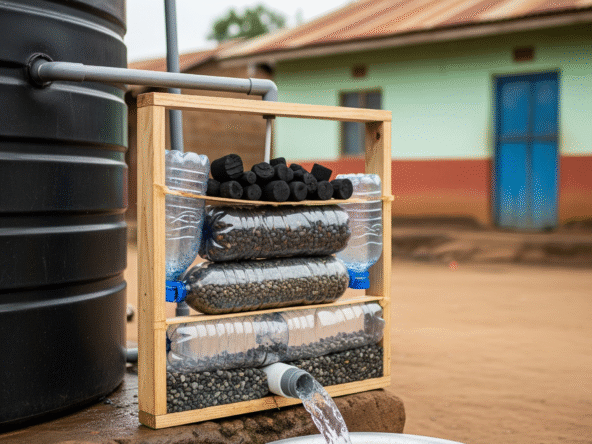In many Kenyan households, tank overflows are either ignored or poorly managed until the resulting flooding, erosion, or pump failure causes damage. Whether you’re using an above-ground plastic tank, an underground reservoir, or a tower-mounted poly tank, proper overflow piping design is a critical part of your water storage system.
This guide walks you through practical tips to design efficient overflow piping that protects your home and maximizes water utility especially if you’re already using automated refills, rainwater harvesting, or multi-tank systems.
1. Why Overflow Piping Is Essential
A well-installed overflow system:
- Prevents water spillage around tank bases
- Protects foundations, paving, and nearby buildings
- Relieves excess pressure in sealed tanks
- Channels water for reuse or safe disposal
Even the most reliable tank can become a flooding hazard during a pump malfunction or heavy rainfall. For example, homes using automated refills as covered in Tank Refill Automation Using Float Switches are especially prone to overflows when float switches fail.
2. Components of a Good Overflow Setup
A robust overflow design includes:
- A properly sized overflow outlet
- Elbow joints for directional control
- Sturdy PVC or HDPE downpipes
- Splash stones or dispersal boxes at ground level
- Optional connection to a soak pit or greywater reuse tank
Many homeowners now integrate their overflow into Soak Pits or Greywater Reuse Systems for improved water sustainability.
3. Sizing and Slope Recommendations
Choosing the right pipe size ensures overflow water exits faster than it enters.
| Tank Capacity | Suggested Overflow Pipe |
|---|---|
| 1,000–2,000L | 1.5-inch PVC |
| 3,000–5,000L | 2-inch PVC |
| 10,000L+ | 3-inch or more |
Ensure a minimum slope of 1:50 for gravity drainage. If the pipe run is long or flat, a Booster Pump may be necessary to assist flow.
4. Layout Tips for Common Tank Types
For Poly Tanks (Above-Ground)
- Install the overflow just under the tank lid
- Use flexible connectors to prevent joint cracking
- Anchor pipes with brackets to avoid sagging
For Underground Tanks
- Use vertical risers to reduce suction backflow
- Fit a non-return valve at discharge points
For Elevated Tower Tanks
- Install elbows and splash boxes to dissipate high-velocity discharge
- Prevent overflow from hitting the stand or nearby walls (see DIY Tank Stand Construction)
5. Where Should Overflow Water Go?
Smart redirection methods:
- Direct overflow into flower beds or vegetable gardens
- Connect to a soak pit to absorb excess without erosion
- Feed a backup IBC tank for reuse (IBC Tank Use in Kenyan Homes)
Avoid discharging near:
- Your house’s foundation
- Neighboring fences
- Paved driveways without drainage
- Septic tank covers or vents
6. Protecting Against Overflow Damage
Maintenance keeps overflow systems efficient. Here’s how:
- Clean inlet ports monthly to prevent blockage
- Use screen mesh to keep out debris and insects
- Paint exposed pipes to protect against UV damage
- Install Overflow Alarm Systems for real-time alerts
7. Integrating Overflow with Landscape Design
Today’s best home designs blend functionality and aesthetics:
- Incorporate piping into Outdoor Seating + Drainage
- Feed overflow into Low-Maintenance Gardens
- Protect walkways with Water-Tolerant Compound Paving
With good planning, your overflow pipe won’t just save water it will boost your home’s appearance and usability.
Overflow piping is often overlooked during installation but it plays a critical role in tank management. When done right, it prevents damage, saves water, and supports sustainability. Whether you’re in Nairobi, Kisumu, or a rural township, this simple design feature can save you thousands in future repairs and water bills.
Explore More:


